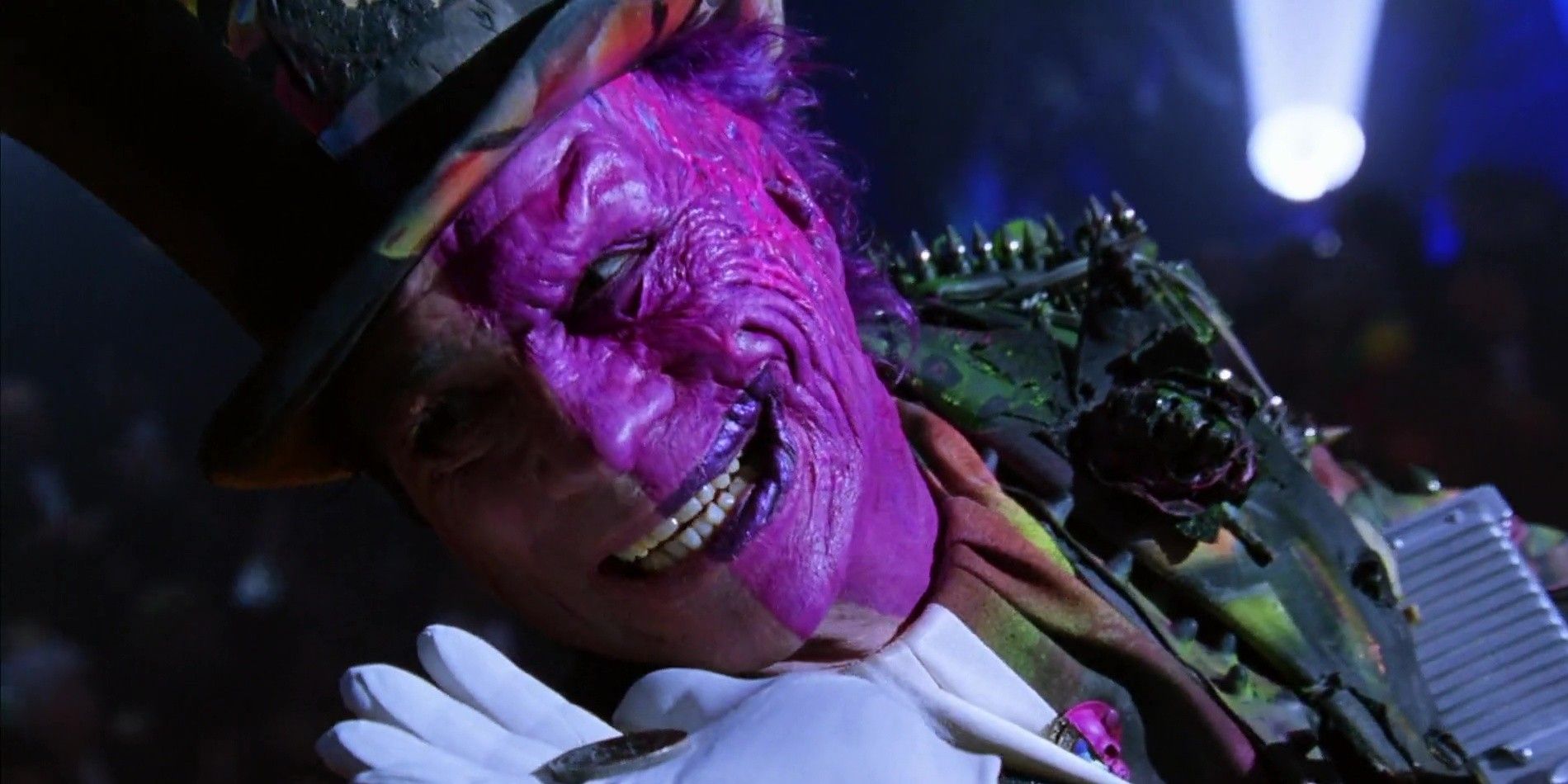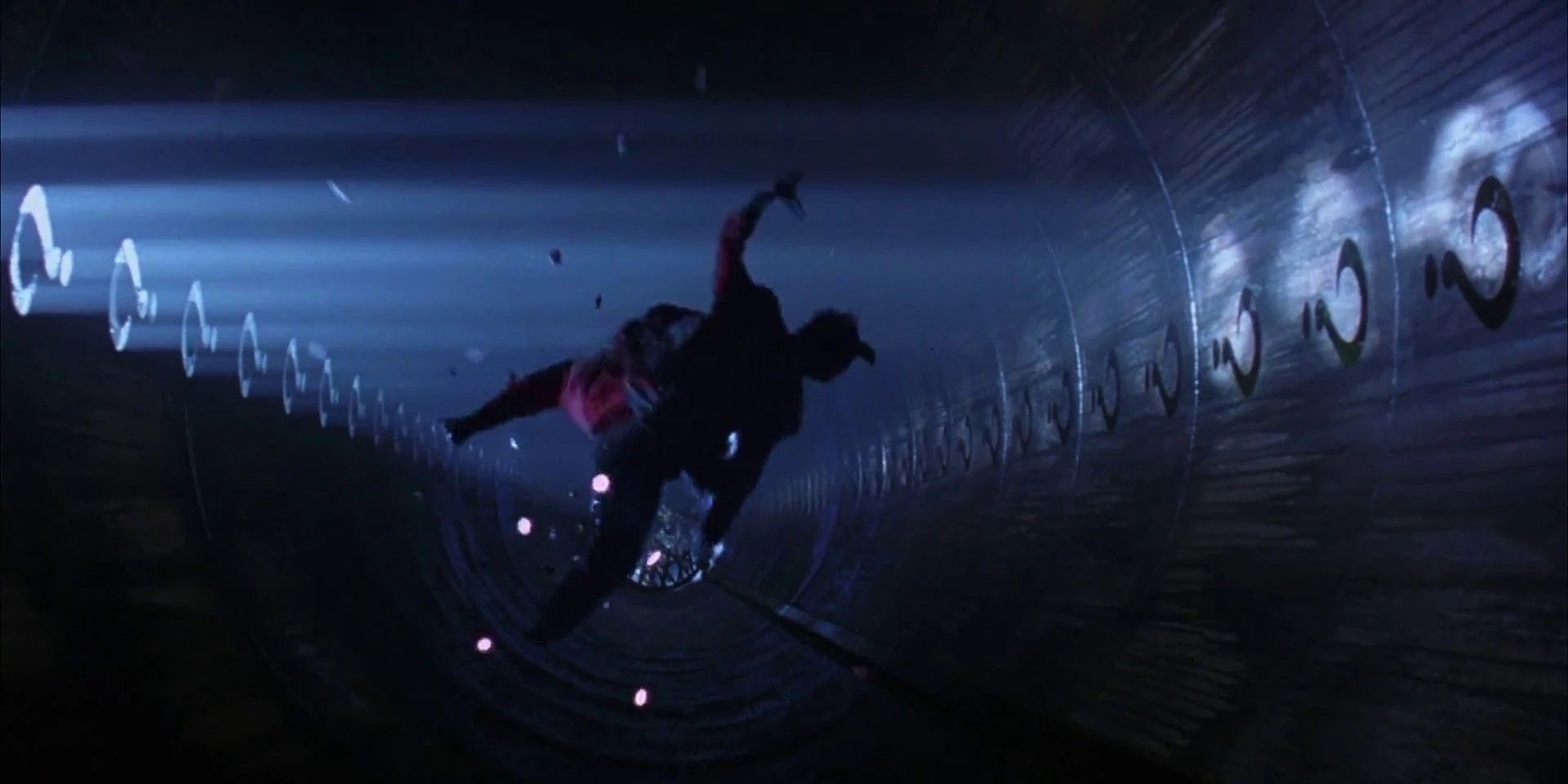Contrary to popular belief, Tommy Lee Jones’ Two-Face might have survived Batman Forever, which would improve Val Kilmer’s take on the Dark Knight. Joel Schumacher’s Batman movies are often criticized for their stark departure from the Gothic tone of Tim Burton’s films. However, beneath the camp, Batman Forever still works as a continuation of Burton’s themes, and Two-Face’s ambiguous fate is a perfect example.
Although a questionable replacement for Billy Dee Williams’ Harvey Dent, Tommy Lee Jones’ take on the iconic villain does further Batman’s arc. The character design is garish and the performance too Joker-like, but these come secondary to his main role. Batman successfully convinces Robin/Dick Grayson (Chris O’Donnell) not to kill Two-Face in revenge for his parents' murder, except Batman Forever supposedly has Kilmer’s hero commit this act instead.
Two-Face’s death seemed certain when he fell into a watery pit filled with spikes. However, Joel Schumacher disagreed, explaining in the Batman Forever DVD commentary, “I did not want to have Batman kill the villains.” He deliberately kept Two-Face’s fate vague, allowing him to potentially return in a sequel. Going by Schumacher’s logic, Kilmer’s Batman doesn't kill anyone in Batman Forever, supporting his no-kill rule and making his overall arc much better.
Kilmer doesn’t physically kill Two-Face but appears to be directly responsible. Wishing to create a lighter tone than his predecessor and emphasize Batman’s heroic side, director Joel Schumacher eschewed excessive violence. Commenting on the vigilante’s murderous actions, Schumacher stated, “I thought that Batman should be above that.” Cornered and looking down the barrel of Two-Face’s gun, Batman reacts out of necessity and uses the villain’s coin obsession against him. Although Two-Face appears to fall to his death, this was never directly confirmed in the movie. Indeed, only Two-Face’s hand is seen sliding into the water - he appears lifeless but could simply be unconscious. His corpse is never shown, and no character in the underrated Batman Forever or its sequel confirms if he is dead or alive.
The Dark Knight’s struggle with guilt and escaping a never-ending cycle of violence was cut down considerably in the editing room and supposedly remains intact in Batman Forever’s darker Schumacher Cut. However, his storyline involving Robin largely revolves around affirming Batman’s no-kill rule. Kilmer’s Batman is emphatic that revenge won’t heal Dick Grayson’s trauma, believing Two-Face’s murder would only lead to more killing. In fact, Kilmer’s hero never attacks Two-Face in Batman Forever, even after being shot during the ransacking of Wayne Manor. Their only brief physical altercation appears in a deleted scene, where Val Kilmer’s Batman declares, “You need help, Harvey… I won’t kill you.” These actions somewhat make up for an undeveloped relationship between Bruce and Harvey but are undermined by Batman Forever’s ending.
Two-Face being alive would restore Kilmer’s Batman arc, and truly prove to Robin that no villain needs to die. To this end, Batman Forever would be comparable to The Batman, with Val Kilmer and Robert Pattinson most strongly emphasizing their versions' no-kill rules. Kilmer would even surpass Adam West, who inadvertently - and remorselessly - caused a woman’s death when she fell into the Batcave's nuclear reactor. Although Joel Schumacher never fully confirmed Two-Face’s survival, a Batman & Robin Easter egg supports this theory - Two-Face’s suit is seen hanging in Schumacher’s Arkham Asylum. This could be another suit that remains from his previous incarceration. However, it’s possible this was subtle confirmation that Two-Face was returned to Arkham.


